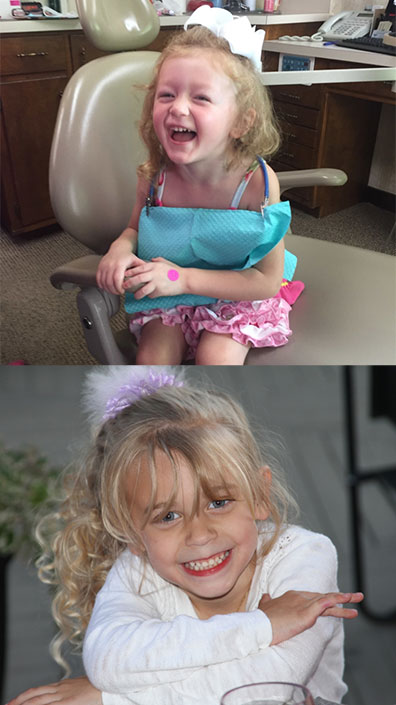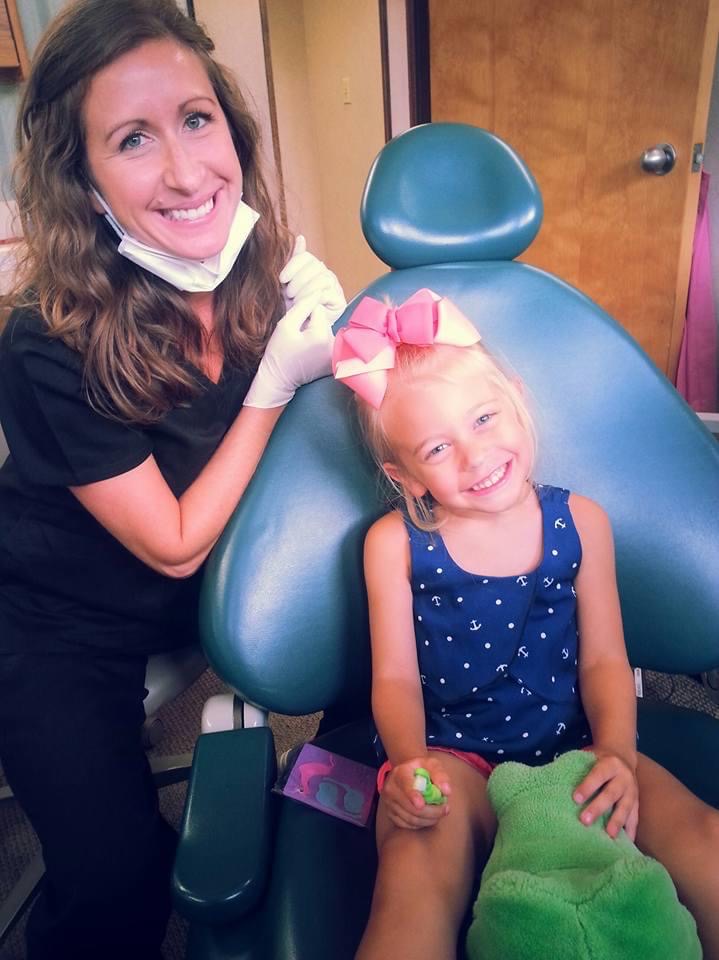Pediatric Dentistry
While primary (or baby) teeth don’t stay forever, it is still important to care for them. Pediatric dentistry will help maintain your child’s oral health now, and provide health benefits well into adulthood. After all, primary teeth are very important!
Primary teeth actually serve as guides for the eruption of permanent (adult) teeth. They hold the space that the permanent teeth will one day fill. The permanent teeth push against the baby teeth roots, which causes them to melt away, allowing the permanent teeth to take their place.
Primary teeth also exist for most of childhood, helping him or her to bite, chew and speak. The primary teeth must be relied on for the first six years or so. Until your child reaches about age 12, he or she will rely on a mix of primary and permanent teeth. Thus, it is vital to keep these teeth healthy until they are lost naturally.
Your Child’s First Teeth
Your baby’s 20 primary teeth normally appear around six and nine months, although this can vary to as early as 3 months and late as 12 months. The two lower front teeth appear first, followed by the two upper teeth. Molars come next, followed by the canines (eyeteeth). During this process your baby can experience discomfort.
While just an infant, make sure to gently wipe new teeth with a water-soaked gauze pad or damp washcloth after each feeding. When your toddler is age 2, with more teeth in his or her mouth, begin a daily brushing routine. Use a small, soft-bristled brush, and no more than a thin smear of fluoridated toothpaste. Continue to assist your child with this important task until he or she can preform it on their own around age 6.
Your Child’s First Pediatric Dental Appointment
The American Academy of Pediatric Dentistry recommends that your child see a dentist by his or her first birthday. This may sound early, but learning proper pediatric oral hygiene techniques, checking for cavities, and watching for developmental problems is very important.
There are several types of tooth decay that small children and babies can be affected by. Early Childhood Caries (tooth decay) can develop rapidly, starting at the hard, outer enamel layer. It then works its way inward to the soft, inner dentin of the tooth in less than six months.
Most importantly, it is vital for your child to have a positive experience at the dentist, since he or she will need to be a regular visitor for years to come.
Pediatric Dental Treatments
There are several treatments offered in pediatric dentistry to ensure a healthy smile. Here are just a few:
- Topical Fluoride – Fluoride aids teeth enamel, making it harder and more resistant to decay. Toothpastes and some drinking water has a small amount of fluoride, but a higher concentration can be applied to increase the protection of your child’s teeth.
- Dental Sealants – There are little grooves on the surfaces of back teeth known as pits and fissures. These are perfect for decay-causing bacteria to hide in. Dental sealants (a plastic coating) can be applied to the tops of these pits and fissures to seal them and lock out bacteria. These are easy to apply and will provide years of protection.
- Root Canal Treatment – Root canal treatments are used to save injured or severely decayed tooth. While adults normally have these procedures, children may sometimes need them too. Remember, baby teeth are important for the growth and placement of adult teeth, which are already forming beneath the gums. Thus, saving the baby teeth from premature loss can help prevent a malocclusion (“mal” – bad; “occlusion” – bite) that would require orthodontic treatment.
- Bonding – Children can be a little rough at times, and may chip or cause minor fractures to their front teeth. These can be repaired with tooth-colored bonding materials. The bondings are made of plastic and glass, and can be used on baby and adult teeth. Bonds will last until the child has completed facial growth.
Orthodontic Concerns
By about age 7, most malocclusions are evident. If orthodontic treatment is started this early, proper tooth positioning and/or jaw growth can be directed properly. It may even eliminate or simplify later treatment. Trained professionals should evaluate your child during this time to detect any orthodontic problems.
Sports and Your Child’s Teeth
According to the American Dental Association, an athlete is 60 times more likely to suffer dental harm if not wearing a custom-made mouthguard. One can be made specifically for your child using a model of his or her teeth. Custom made mouthguards offer more protection than off0the-shelf options. Get one before the first day of practice to ensure less pain, injuries, and dental expenses down the road.
Learn more about us at our Meet Dr. Guest page. Need more information? Call Guest, Guest & Guest at (423) 247-2151 or send us a message today!


